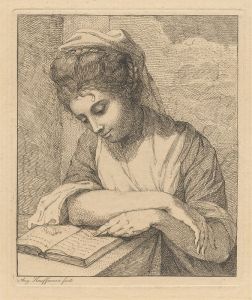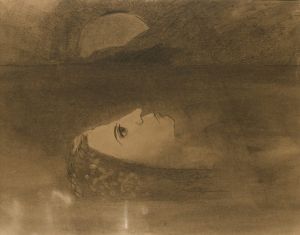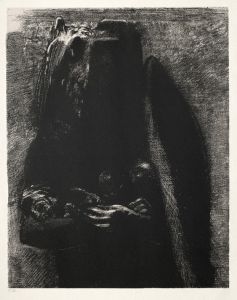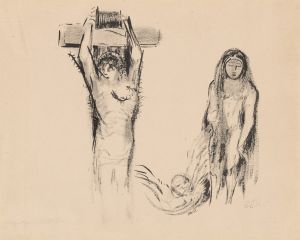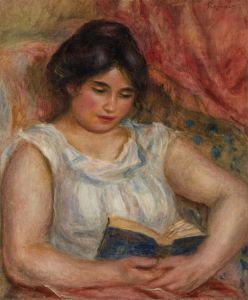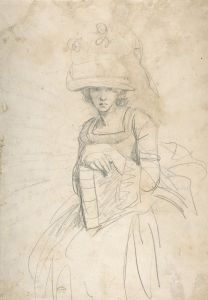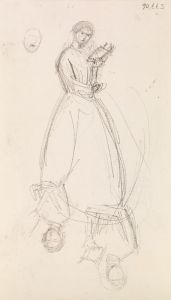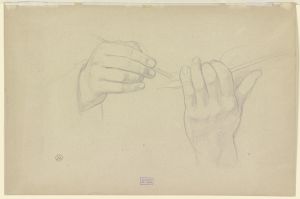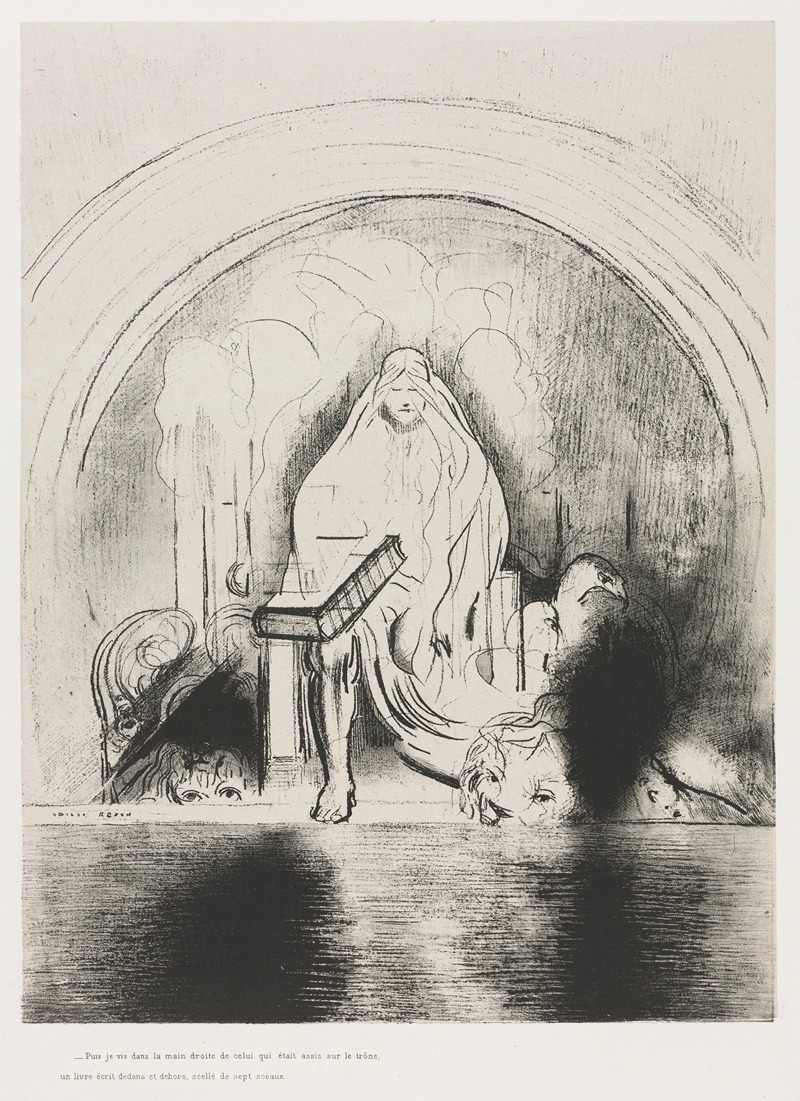
And I Saw in the Right Hand of Him that Sat on the Throne a Book Written within and on the Backside, Sealed with Seven Seals
A hand-painted replica of Odilon Redon’s masterpiece And I Saw in the Right Hand of Him that Sat on the Throne a Book Written within and on the Backside, Sealed with Seven Seals, meticulously crafted by professional artists to capture the true essence of the original. Each piece is created with museum-quality canvas and rare mineral pigments, carefully painted by experienced artists with delicate brushstrokes and rich, layered colors to perfectly recreate the texture of the original artwork. Unlike machine-printed reproductions, this hand-painted version brings the painting to life, infused with the artist’s emotions and skill in every stroke. Whether for personal collection or home decoration, it instantly elevates the artistic atmosphere of any space.
Odilon Redon, a French symbolist painter and printmaker, created the artwork titled And I Saw in the Right Hand of Him that Sat on the Throne a Book Written within and on the Backside, Sealed with Seven Seals in 1896. This work is part of Redon's series of lithographs inspired by the biblical text of the Book of Revelation. The title of the piece directly references Revelation 5:1, which describes a vision of a divine figure holding a sealed book, a symbol of hidden knowledge and divine mystery.
The lithograph is executed in black and white, a hallmark of Redon's early works, which often explored themes of spirituality, mysticism, and the subconscious. The composition features a central figure, likely representing the divine presence described in the biblical passage, holding a book that is prominently depicted. The book is sealed with seven seals, as described in the scripture, emphasizing its sacred and enigmatic nature. Surrounding the central figure are abstract and dreamlike forms, characteristic of Redon's style, which evoke a sense of otherworldliness and transcendence.
Redon's work during this period was heavily influenced by literature, philosophy, and his own introspective nature. His use of monochromatic tones in this lithograph enhances the ethereal and contemplative quality of the piece. The artwork reflects Redon's interest in exploring the boundaries between the material and spiritual worlds, a recurring theme in his oeuvre.
This lithograph is part of a larger series titled The Apocalypse of St. John, which includes other works inspired by the Book of Revelation. The series demonstrates Redon's ability to translate complex theological and philosophical ideas into visual form, using symbolism and imaginative imagery to engage the viewer on an emotional and intellectual level.
The artwork is now recognized as an important example of Redon's contribution to the Symbolist movement, which sought to express the ineffable and explore the realms of imagination and spirituality. It is housed in various collections and continues to be studied for its artistic and thematic significance.






